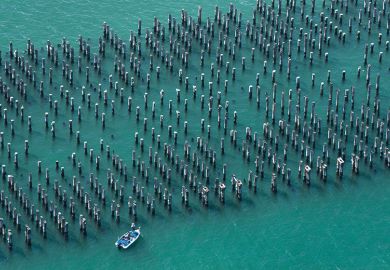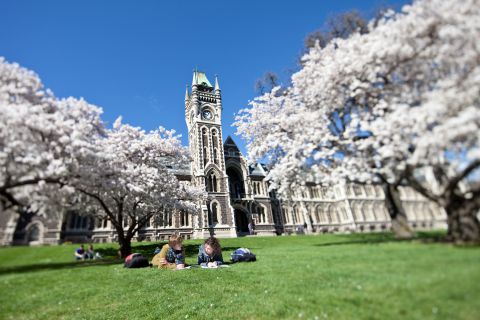New Zealand’s two top-ranked universities have dominated the national research assessment exercise, together netting half the country’s competitive research funding.
The universities of Auckland and Otago will claim 48 per cent of the NZ$315 million (£163 million) allocated annually in line with the outcomes of last year’s quality evaluation for the Performance-Based Research Fund, according to interim results reported on 30 April.
The pair will also share 47 per cent of funding determined by research degree completion, and 56 per cent of the allocations governed by external research income.
Overall, the report suggests that New Zealand’s research output is improving in both quantity and quality, reflecting similar results from the Excellence in Research for Australia exercise.
Since the first of four New Zealand evaluations so far took place in 2003, the tally of “evidence portfolios” deemed worthy of funding has jumped by two-thirds to about 7,400. The number of institutions submitting work has increased by one-third since the last assessment in 2012, highlighting “emerging research cultures” outside universities.
Meanwhile, the proportion of submitted work that was awarded a category A rating – regarded as “world-class standard” – has increased from 10 per cent to 16 per cent.
Another 40 per cent of portfolios were judged as “high quality”, while the proportion of work assessed in the C category – warranting “some peer recognition” but demonstrating little impact – fell from 52 per cent to 29 per cent.
A further 15 per cent of submitted work was rated in the C(NE) category, which is limited to new and emerging researchers.
On a full-time equivalent basis, just 14 per cent of active university researchers were assessed in the new and emerging category. This compared with 27 per cent at private training enterprises and 22 per cent at polytechnics and institutes of technology.
The low proportion of early career researchers at universities “could indicate a future workforce issue” as their more highly ranked counterparts begin to retire, the report warns.
Representative body Universities New Zealand acknowledged the challenge of maintaining the research effort within an ageing academic workforce. “We look forward to working with the government to support early career researchers, and to find sustainable ways of increasing funding for postdoctoral research,” said chief executive Chris Whelan.
The country’s eight universities will collectively attract 97 per cent of competitive research funding. Universities New Zealand said the interim report confirmed the sector as “the powerhouse” of NZ research.
“Universities have a role to play as repositories of knowledge and expertise, meeting international standards of research and teaching, and acting as a critic and conscience of society,” said chair Derek McCormack, vice-chancellor of Auckland University of Technology. “These results show universities are successfully meeting this challenge.”
The areas boasting the biggest increases in submitted output were biomedicine, nursing and engineering and technology. The report also reflects increasing gender equity in the research workforce, with women constituting 43 per cent of active researchers, compared with 39 per cent in 2012.
The associate minister of education, Jenny Salesa, said the profile of Pacific research had also been raised through the establishment of a new panel to assess research into Pacific Island communities.
Fifty-five per cent of PBRF allocations are awarded on the basis of the quality evaluation, with 25 per cent determined by higher degree completions and 20 per cent by external research earnings. Ms Salesa said the Education Ministry would review the scheme this year.
Register to continue
Why register?
- Registration is free and only takes a moment
- Once registered, you can read 3 articles a month
- Sign up for our newsletter
Subscribe
Or subscribe for unlimited access to:
- Unlimited access to news, views, insights & reviews
- Digital editions
- Digital access to THE’s university and college rankings analysis
Already registered or a current subscriber?










